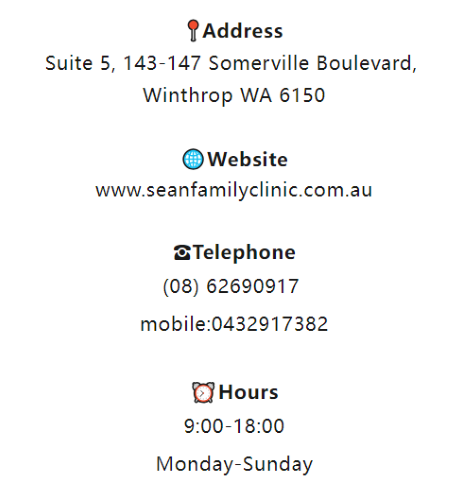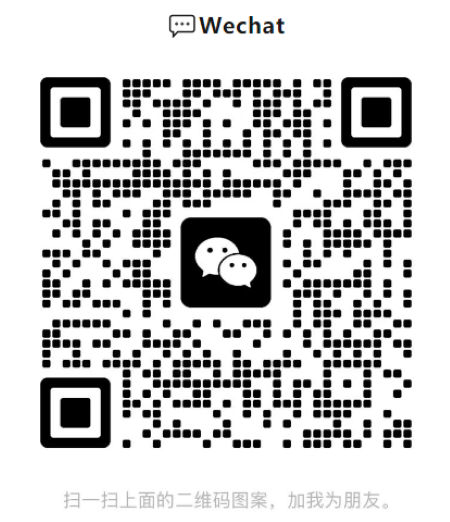Before the main topic, please allow Dr.Zhu to introduce the latest medical cases.
First case
A Western couple had been trying to conceive for two years without success. Western medicine diagnosed the male partner with weak sperm and the female partner with ovulation disorders. They attempted in vitro fertilization (IVF) and, on a friend's recommendation, visited my clinic. Dr.Zhu diagnosed through Traditional Chinese Medicine (TCM) that the female partner had insufficient liver and kidney function, while the male partner had kidney yin deficiency. With the assistance of Chinese herbs and acupuncture, the couple actively cooperated with the treatment. During the treatment, the male partner produced healthy sperm, but the female partner experienced ovarian hyperstimulation syndrome during ovulation induction. Dr.Zhu recommended increased water intake, frequent urination, and rest, and arranged emergency acupuncture treatment to alleviate the symptoms. After the acupuncture, the female partner's symptoms disappeared, and she successfully became pregnant. Dr.Zhu noted that TCM can support IVF technology, and Western society has a high acceptance rate for acupuncture treatment for infertility, making it worth trying.
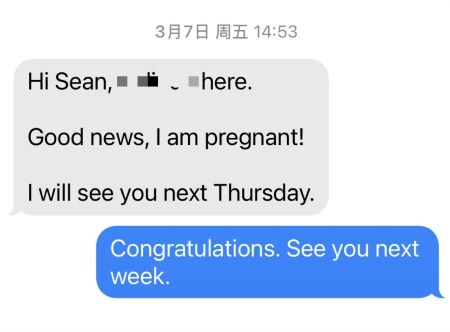
( Some pictures are from the Internet. lf there is any infringement, please contact us to delete . Thank you)
Second case
A pregnant woman, who had passed her due date by one week, was still waiting for her baby to be born. A surgical procedure was planned for Friday, but by Monday, she came to Dr.Zhu with a hopeful attitude, wishing to induce labor through acupuncture. The patient was experiencing her first pregnancy and was considered an advanced-age mother. Upon her initial visit to the clinic, she appeared very nervous. After calming the expectant mother's emotions, Dr.Zhu selected safe acupoints such as Hegu and Sanyinjiao for needle insertion. Within just five minutes after the acupuncture, the pregnant woman's anxiety and pain were alleviated. That night, she gave birth to a healthy baby.
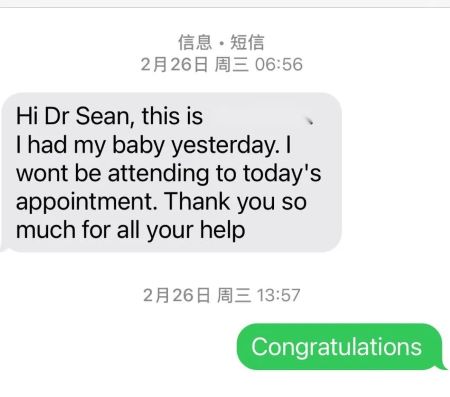
( Some pictures are from the Internet. lf there is any infringement, please contact us to delete . Thank you)
Third case
A 10-year-old child has been an avid reader since childhood, but due to poor eye habits, the eye's axial length has increased, leading to gradually blurred vision and continuous decline in eyesight. Under the guidance of Dr.Zhu, through a series of systematic acupuncture treatments, the excessive growth of the eye's axial length was quickly controlled, and the further deterioration of myopia was effectively prevented.

This leads us to today's topic, in this era of digitization, myopia has evolved into a "pandemic," especially among students and office workers, glasses have almost become the "standard equipment."
While we are still worried about the deterioration of our eyesight, Traditional Chinese Medicine acupuncture has quietly stepped onto the stage of "treating myopia." You might be curious: "Acupuncture, this ancient therapy, can it really improve the condition of myopia?"
Today, Dr.Zhu will take you on a journey to explore this magical treatment method in a lively and interesting way, and examine how the latest scientific research supports it.

( Some pictures are from the Internet. lf there is any infringement, please contact us to delete . Thank you)
I. Causes of Myopia
Before discussing the treatment of myopia with acupuncture in Traditional Chinese Medicine, we first need to understand the essence of myopia.
In simple terms, myopia is characterized by "clear near vision but blurred distant vision." The core reason is the axial elongation of the eyeball, causing the focal point of light to be located in front of the retina, rather than exactly on the retina.
So, what causes myopia in modern people? The main factors include:
Excessive eye use – Long periods of staring at smartphone, computer screens, or books, with eyes lacking necessary rest.
Poor eye habits – Such as reading while lying down or using a smartphone while lying on one's side, these habits exert additional stress on the eyes.
Lack of outdoor activities – Sunlight is beneficial for eye health, but many people choose to stay indoors for long periods, not even willing to open windows.
Genetic predisposition – If both parents suffer from myopia, the likelihood of their children being myopic significantly increases.

( Some pictures are from the Internet. lf there is any infringement, please contact us to delete . Thank you)
From the perspective of Western medicine, myopia is considered an "irreversible" condition, and once the degree increases, recovery becomes quite difficult. Ultimately, people often rely on laser surgery to solve the problem.
However, in recent years, numerous studies have found that acupuncture may help improve vision, alleviate eye fatigue, and even slow the progression of myopia, which has rekindled hope for this millennial therapy.
II.Traditional Chinese Medicine Perspective: Myopia is not just an issue with the eyes.
Traditional Chinese medicine theory posits that myopia is a manifestation of overall bodily imbalance in the eyes. The ancient medical text "The Great Compendium of Eye Diseases" refers to myopia as "the condition of being able to see near but not far," and identifies its pathogenesis as related to the heart, liver, spleen, and kidneys:
1. Insufficient heart and liver blood: Prolonged use of the eyes can deplete the heart's blood, and inadequate liver blood storage leads to a lack of nourishment for the eyes. — The main cause of myopia in white-collar workers and students.
2. Spleen deficiency and weak qi: Irregular eating habits harm the spleen and stomach, resulting in difficulty transporting qi and blood to the eyes. — The main cause of myopia in children.
3. Deficiency of kidney essence: Either congenital insufficiency or excessive consumption causes the pupil to lose nourishment. — The main cause of myopia in the elderly.
4. Long-term close-range use of the eyes can lead to "excess yin and insufficient yang," accelerating the growth of the eye axis. — A common issue among those frequently using smartphones.
III. How does traditional Chinese acupuncture treat myopia?
The core principle of traditional Chinese acupuncture treatment for myopia lies in regulating the body's qi and blood, unblocking the meridians, thereby stimulating and enhancing the body's self-healing ability.
1. Improving Eye Blood Circulation
Acupuncture can effectively promote blood circulation around the eyes, providing sufficient nutrients to the eye tissues, enhancing their metabolic capacity, thereby alleviating eye fatigue.
2. Regulating Eye Nerve Function
Acupuncture can stimulate the brain's visual center, strengthening the regulatory function of the eye muscles, making the eyes more agile, and helping to slow down the increase in myopia degree.
3. Alleviating Eye Muscle Tension
Long periods of staring at electronic screens can cause the ciliary muscles of the eye to remain tense, similar to a tightly stretched rubber band. Over time, this can lead to a decline in vision. Acupuncture helps to relax these tense muscles, allowing the eyes to get the necessary rest.
4. Promoting Eye Axis Adjustment
The fundamental cause of myopia is the elongation of the eye axis. Acupuncture helps to control excessive growth of the eye axis, especially having a positive effect on the prevention and control of myopia in children and adolescents.
IV. Traditional Chinese Medicine Acupuncture "Black Technology": The Mystery of Vision in Acupoints
1. Periocular Acupuncture: Directly Targeting the "Core"
Traditional Chinese Medicine (TCM) considers the periocular area to be a "convergence of meridians." By needling points such as Jingming, Cuanzhu, and Chengqi, it is possible to effectively stimulate the optic nerve and ciliary muscle. Research from an ophthalmic disease prevention and treatment center in China indicates that acupuncture can inhibit scleral remodeling and relax the ciliary muscle, with an effectiveness rate of up to 76.5% for pseudomyopia. A student who underwent treatment described the experience: "After acupuncture, the sensation of viewing the blackboard was like suddenly seeing through a window that had been cleared of fog."
2. Whole Body Regulation: A Vision Guard from the Soles of the Feet to the Crown of the Head
In addition to periocular points, TCM also selects acupoints such as Zusanli (spleen strengthening), Taichong (liver soothing), and Sanyinjiao (kidney nourishing) for treatment throughout the body. This "eye-body co-treatment" method can improve physical constitution and reduce the recurrence rate of myopia.
3. Ear Seed Pressing: "Vision Protectors" Adhered to the Ears
In TCM theory, the ear is regarded as a "miniature version of the human body." By applying pressure with Vaccaria seeds on ear acupoints such as "eye," "liver," and "kidney," it is possible to alleviate eye fatigue and assist in regulating the ciliary muscle. When combined with outdoor activities, ear seed therapy can reduce the progression speed of juvenile myopia by 30%.
V. Can acupuncture replace glasses?
Objectively speaking, acupuncture cannot reverse the axial changes of true myopia, nor can it completely "cure" myopia, but it can indeed improve vision, alleviate eye fatigue, and control the further deepening of myopia. It is particularly suitable for teenagers and those who have been overusing their eyes for a long time. If you wish to prevent further increases in myopia, you might consider trying traditional Chinese acupuncture, allowing your eyes some relief and making the world appear clearer.
VI. Precautions for Acupuncture Treatment of Myopia
Although acupuncture has shown positive effects in improving vision, the following points need special attention to achieve the best therapeutic results:
Ensure that the acupuncture is performed by a practitioner with professional experience and skills - the eye is an extremely sensitive and high-risk area, never attempt self-acupuncture, safety is paramount.
Consistent treatment - acupuncture is not an instant solution; it requires a complete course of treatment to achieve results.
Maintain good eye care habits - even the most effective acupuncture treatment can hardly resist the bad habit of prolonged use of electronic devices until late at night.
Balanced diet - it is recommended to increase the intake of foods rich in vitamin A and lutein, such as carrots, blueberries, and dark green vegetables, all of which help maintain eye health.
VII. Suitable population for acupuncture treatment
1. Early myopia patients: For early myopia patients with lower diopter, acupuncture treatment can help restore ocular blood circulation, adjust the diopter, thereby slowing the progression of myopia.
2. Myopia patients caused by eye fatigue: Patients who develop myopia due to prolonged overuse of the eyes and subsequent eye fatigue can benefit from acupuncture, which can improve ocular blood circulation, alleviate fatigue, and reduce myopic symptoms.
3. Myopia patients with visual fatigue or eye discomfort: Some myopia patients often experience symptoms such as visual fatigue, dry eyes, and blurred vision. Acupuncture therapy can effectively alleviate these symptoms and improve eye discomfort.
4. Myopia patients with mild fundus lesions: Fundus lesions can affect vision. For those with mild fundus lesions among early or mild myopia patients, acupuncture can help promote ocular blood circulation and reduce the severity of the lesions.
VIII. Dr. Zhu's experience in treating myopia
Dr. Zhu ingeniously integrates the theory of meridians with the theory of zang-fu organs during the treatment of myopia. He believes that the formation of myopia in children is closely related to the widespread use of electronic products, increased academic pressure, and the habit of prolonged close-range eye use. Excessive use of vision for long periods leads to the consumption of the essence, qi, and blood of the eyes. Coupled with the "delicate zang-fu organs and insufficient form and qi" during childhood, when the body is in a rapid growth and development phase, the essence and qi of the meridians and zang-fu organs are not yet sufficient, which easily leads to myopia. Based on the treatment principles of regulating the pivot, unblocking the channels, tonifying qi and nourishing blood, and benefiting essence and improving eyesight, Dr. Zhu mainly selects acupoints from the lesser yin and lesser yang meridians for treatment. In acupuncture treatment for children with myopia, finer and smaller needles are usually chosen to produce a slight sensation of soreness and distension, with fewer acupoints selected, resulting in almost no discomfort. Therefore, most children can cooperate well with the treatment.
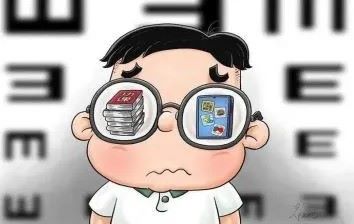
( Some pictures are from the Internet. lf there is any infringement, please contact us to delete . Thank you)
Dr.Zhu points out that staying up late to binge-watch dramas, overworking, and indulging in milk tea and desserts have become the hallmark of modern adult life. These bad habits first harm our vision, leading to a continuous decline in the eyesight of many adults. Typically, the development of myopia tends to stabilize with age, especially after adulthood, when the growth of the eye axis stops, and the degree of myopia also stabilizes. However, this is only the ideal state. With the increasingly close integration of electronic products into people's lives, an increasing number of adults are experiencing a continuous deepening of their myopia. The "Neijing" mentions that "prolonged viewing harms the blood," and the liver is responsible for storing blood, with the eyes being the orifices of the liver. Therefore, the key to treating adult myopia lies in nourishing the liver and kidneys and replenishing essence and blood to alleviate eye fatigue. In addition to conventional acupuncture point treatment, Doctor Zhu also employs moxibustion therapy, which is warm and penetrating, with strong drug permeability, and has the effects of warming the meridians, promoting the flow of qi and blood, dispelling cold, and removing blood stasis. By stimulating local acupoints around the eyes, it improves local blood circulation, thereby achieving the therapeutic purpose.
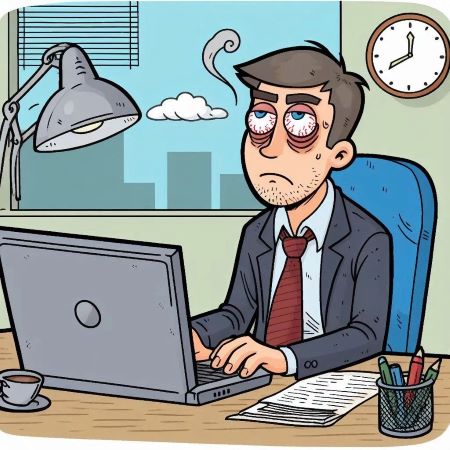
( Some pictures are from the Internet. lf there is any infringement, please contact us to delete . Thank you)
Eye health issues in middle-aged and elderly individuals are often associated with the decline of liver and kidney essence. Insufficient essence cannot be transformed into enough qi, and the deficiency of qi fails to nourish the spirit light of the eyes, resulting in a decrease in near vision and even poorer distant vision. Dr. Zhu has found in his many years of clinical practice that the effects of acupuncture treatment for eye problems in the elderly are often not as significant as in adolescents. However, taking specific traditional Chinese medicine formulas orally,
such as Yangyin Fuming Decoction, Baozhen Decoction, or Dihuang Decoction, can effectively alleviate symptoms of eye fatigue. The key to choosing medication is to use drugs reasonably according to the condition, ensuring the balance and coordination of the liver, spleen, and kidneys, and avoiding bias.
Due to space limitations, it is not possible to elaborate on all the details of treating myopia, for example, whether there is a risk in needling Jingming point, if there are safer point options available? Why needling points on the lower leg can improve vision? How long does auricular acupuncture therapy last? If you are interested in these or other related questions, please feel free to consult Dr. Zhu's clinic. Dr. Zhu will provide each patient with a professional and practical treatment plan.
Dr. Zhu's contact information is as follows:

